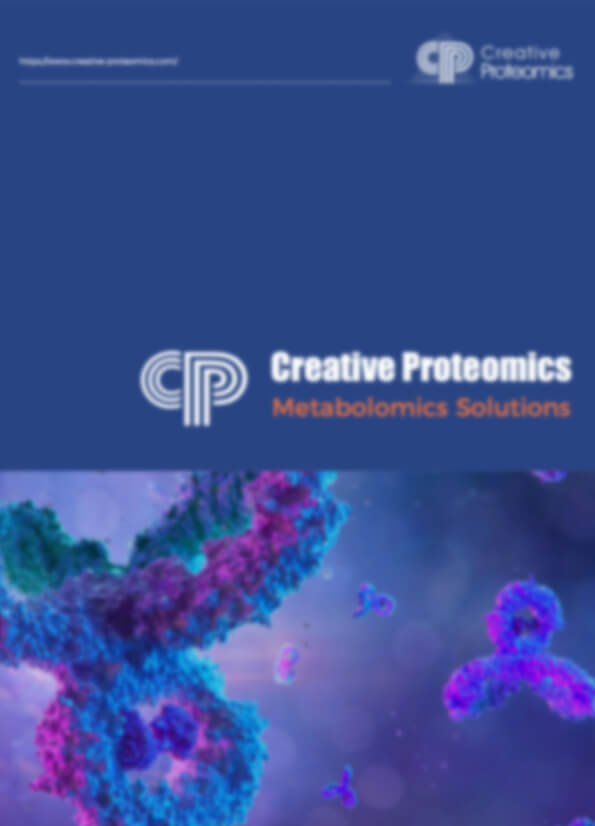Acetic Acid Analysis Service
At Creative Proteomics, we offer precise acetic acid analysis for quality control, regulatory compliance, and process optimization across industries like food, pharmaceuticals, and environmental science. Our services include quantification, contamination monitoring, and impurity detection, ensuring product consistency and safety. Tailored to your needs, we deliver actionable insights to enhance efficiency and meet standards.
Submit Your Request Now
×- What We Provide
- Technology Platform
- Advantages
- Sample Requirements
- Demo
- FAQs
- Publications
What is Acetic Acid?
Acetic acid, commonly known as vinegar acid, is a simple carboxylic acid with the chemical formula CH₃COOH. It is characterized by its strong, pungent smell and is most commonly recognized as the key component of vinegar. Beyond its use in culinary applications, acetic acid is a fundamental building block in the production of a wide range of chemicals, including acetates, plastics, and synthetic fibers. It also plays an important role in metabolism within living organisms as part of the citric acid cycle.
Due to its versatile nature, acetic acid analysis is a critical tool in multiple industries, including:
- Biochemical research – Studying metabolic pathways and enzyme activity.
- Food industry – Ensuring the quality of vinegar and fermented products.
- Pharmaceuticals – Determining the concentration in drug formulations.
- Environmental monitoring – Testing for acetic acid in water and waste samples.
Acetic Acid Analysis Services Provided by Creative Proteomics
Quantitative Analysis of Acetic Acid: Measurement of acetic acid concentration in various samples.
Identification of Acetic Acid in Complex Mixtures: Detection and quantification of acetic acid even in complex biological, chemical, or industrial samples.
Acetic Acid Content in Food and Beverages: Testing vinegar, sauces, and fermented products for acetic acid levels.
Acetic Acid in Pharmaceutical Products: Ensuring the quality and consistency of acetic acid in drug formulations.
Acetic Acid in Environmental Samples: Analysis of water, air, and soil samples for acetic acid contamination or presence.
Acetic Acid Testing in Industrial Production: Quality control and analysis in the production of acetic acid-based chemicals.
List of Detected Acetic Acid Compounds
| Compound Name | Description |
|---|---|
| Acetic Acid (CH₃COOH) | Primary analyte detected in all samples. |
| Acetate Ions (CH₃COO⁻) | Salt form of acetic acid, often present in biological and environmental samples. |
| Acetaldehyde (C₂H₄O) | Intermediate compound often found in fermentation and metabolism. |
| Acetyl-CoA | Acetyl group bound to coenzyme A, an important biochemical compound. |
| Acetone (C₃H₆O) | Found in various chemical processes, potentially related to acetic acid. |
Methods for Acetic Acid Detection
GC-FID (Agilent 7890B): Quantifies acetic acid and volatile organics (e.g., methanol) with ±1.5% reproducibility.
HPLC-ELSD (Shimadzu LC-40): Resolves non-volatile impurities (e.g., propionic acid) in food-grade acetic acid.

Agilent 7890B Gas chromatography system (Fig from Agilent)

Liquid Chromatography Efficiency with Nexera Series | (Fig from SHIMADZU)
Advantages of Our Acetic Acid Detection
- High Precision: Achieve detection sensitivity down to 0.1 µM with 99.5% quantification accuracy.
- Versatile Applications: Analyze acetic acid across food, pharmaceuticals, environmental, and research sectors.
- Fast Turnaround: Standard results in 5-10 days, with expedited options available in 48-72 hours.
- Experienced Experts: 20+ years of expertise delivering tailored solutions for complex analyses.
- Minimal Sample Volume: Analyze as little as 1 mL of biological fluid with high sensitivity.
- Actionable Reporting: Clear, comprehensive reports with visual data for informed decision-making.
- Cost-Effective: Competitive pricing without compromising quality or precision.
Sample Requirements for Acetic Acid Analysis
| Sample Type | Minimum Volume/Amount | Preservation | Container | Method Compatibility | Key Notes |
|---|---|---|---|---|---|
| Liquid (aqueous) | 10 mL | 4°C in amber glass vial; avoid CO₂ exposure | PTFE-lined cap vial | GC-FID, HPLC-ELSD |
|
| Liquid (organic) | 5 mL | Store at -20°C; protect from light | Glass vial with Teflon seal | GC-FID |
|
| Solid (powder) | 20 g | Dry, sealed in aluminized pouch | Vacuum-sealed bag | HPLC-ELSD |
|
| Fermentation Broth | 15 mL | Freeze at -80°C; ship on dry ice | Cryogenic vial | GC-FID, HPLC-ELSD |
|
Applications of Acetic Acid Assay
Food & Beverage Industry
Precise measurement of acetic acid levels in vinegar, fermented foods (e.g., pickles, kimchi), and beverages to ensure product quality, prevent spoilage, and identify adulteration.
Pharmaceutical Manufacturing
Reliable quantification of acetic acid in topical formulations, injectables, and synthesis buffers to validate drug stability and impurity control.
Environmental Testing
Detection of trace acetic acid in wastewater, air emissions, and soil samples to assess industrial pollution and support remediation strategies.
Biotechnology Research
Analysis of acetic acid in microbial fermentation broths and cell cultures to optimize metabolic engineering and bioprocess efficiency.
Industrial Chemistry
Monitoring acetic acid purity in chemical production (e.g., vinyl acetate, cellulose acetate) and polymer manufacturing to ensure product consistency.
Forensic Toxicology
High-sensitivity detection of acetic acid in biological samples (blood, urine) for poisoning case investigations and metabolic disorder studies.
Demo Result of Targeted Metabolomics Service
Figures come from (Li, Y.et.al, Sci Rep,2023)
FAQ of Acetic Acid Analysis
Learn about other Q&A.
Acetic Acid Analysis Case Study
Publications
Here are some publications in Metabolomics research from our clients:

- Modulation of the tick gut milieu by a secreted tick protein favors Borrelia burgdorferi colonization. 2017. https://doi.org/10.1038/s41467-017-00208-0
- Metabolites and Genes behind Cardiac Metabolic Remodeling in Mice with Type 1 Diabetes Mellitus. 2022. https://doi.org/10.3390/ijms23031392
- Inflammation primes the kidney for recovery by activating AZIN1 A-to-I editing. 2023. https://doi.org/10.1101/2023.11.09.566426
- Proteolytic activation of fatty acid synthase signals pan-stress resolution. 2024. https://doi.org/10.1038/s42255-023-00939-z
- Untargeted metabolomics reveal sex-specific and non-specific redox-modulating metabolites in kidneys following binge drinking. 2023. https://doi.org/10.1530/REM-23-0005














